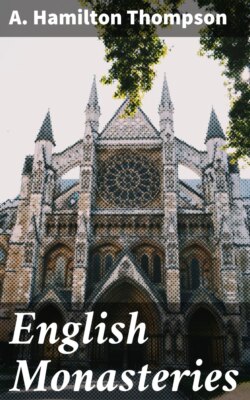Читать книгу English Monasteries - A. Hamilton Thompson - Страница 9
На сайте Литреса книга снята с продажи.
§ 6.
ОглавлениеTable of Contents
The Danish invasions brought extinction to the monastic life in the greater part of England. It was not until about a hundred years later that it was revived. Odo, archbishop of Canterbury 942–59, prepared the way for the movement. Its success was achieved under his successor, St. Dunstan, with the co-operation of Edgar the peaceful. Ethelwold, bishop of Winchester, and Oswald, archbishop of York, were its most active promoters. Both were disciples of the reformed Benedictine rule which, early in the tenth century, had begun to spread from the abbey of Cluny. The abbey of Fleury or Saint-Benoît-sur-Loire, which, after the sack of Monte Cassino by the Lombards in 660, had become the resting-place of the body of St. Benedict, was reformed under Cluniac influence. Oswald studied the Benedictine rule at Fleury. Made bishop of Worcester in 961, he was active in replacing the secular clergy of the churches of his diocese by monks. At Evesham, Pershore, Winchcombe, Worcester and elsewhere, Benedictine monks were introduced. In 971 Oswald aided Aelfwine, an East Anglian nobleman, to found the monastery of Ramsey in Huntingdonshire, and a few years later he and Ethelwold persuaded Abbo of Fleury to visit England and help them in extending the religious life. Ethelwold was equally active at Winchester, and, under a charter from king Edgar, restored destroyed monasteries throughout the country, including Ely and Peterborough. Dunstan, the reformer of Glastonbury, gave active sympathy to the movement, but was more cautious in his attitude to the secular clergy; and it is noteworthy that the reform did not at once extend to his cathedral church at Canterbury.
